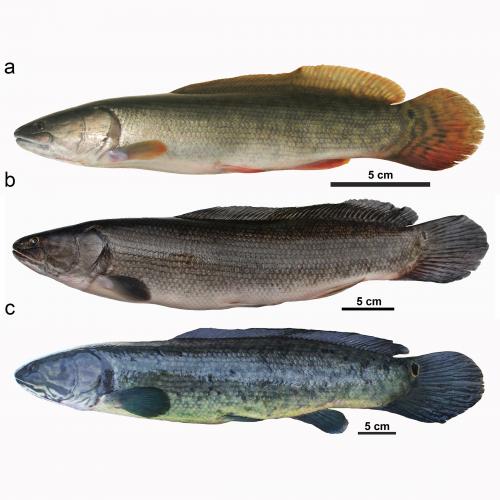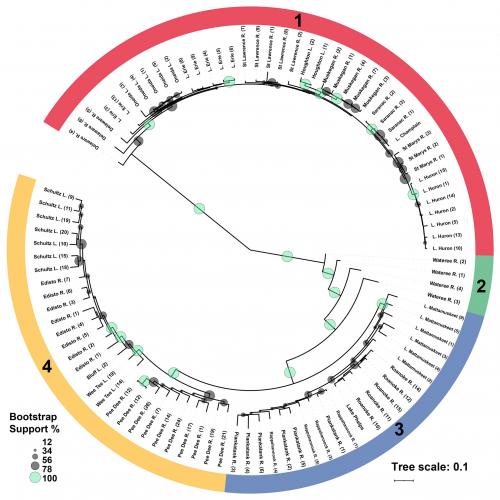Bowfin fishes are recognized as evolutionary relicts or ‘living fossils’ that historically were distributed worldwide, going back almost 150 million years and living alongside dinosaurs. These fishes retain many of the morphological traits of their fossil ancestors and are found only in the United States and Canada east of the Rockies.
Researchers at the New York State Museum and SUNY-ESF have recently published a peer-reviewed journal article that demonstrates the existence of at least two species of living Bowfin which have been widely accepted to represent only a single, widespread species for over 125 years. Using genomic data in conjunction with several different phylogenetic and population genetic analyses, they were able to show that individuals from upstate New York and the Great Lakes represent Amia ocellicauda (first described in 1836) rather than the widely recognized A. calva. Though geographic gaps in sampling prevented a full evaluation of living Bowfin diversity and the ranges of those species, these results are suggestive that much remains to be found.
The full article is available at: https://www.nature.com/articles/s41598-022-20875-4.
Figure 1. The two species of Bowfin indicated in the journal article. A and B represent Amia calva from South Carolina populations, while C represents A. ocellicauda from Georgian Bay, Lake Huron, ON.
Figure 2. A circular evolutionary tree showing the relationships between the Bowfin specimens analyzed. Individuals falling under the red bar are A. ocellicauda, while the others are considered A. calva, for the time being. As indicated by the different colored bars and branching patterns, additional, unrecognized diversity may exist within these specimens.





